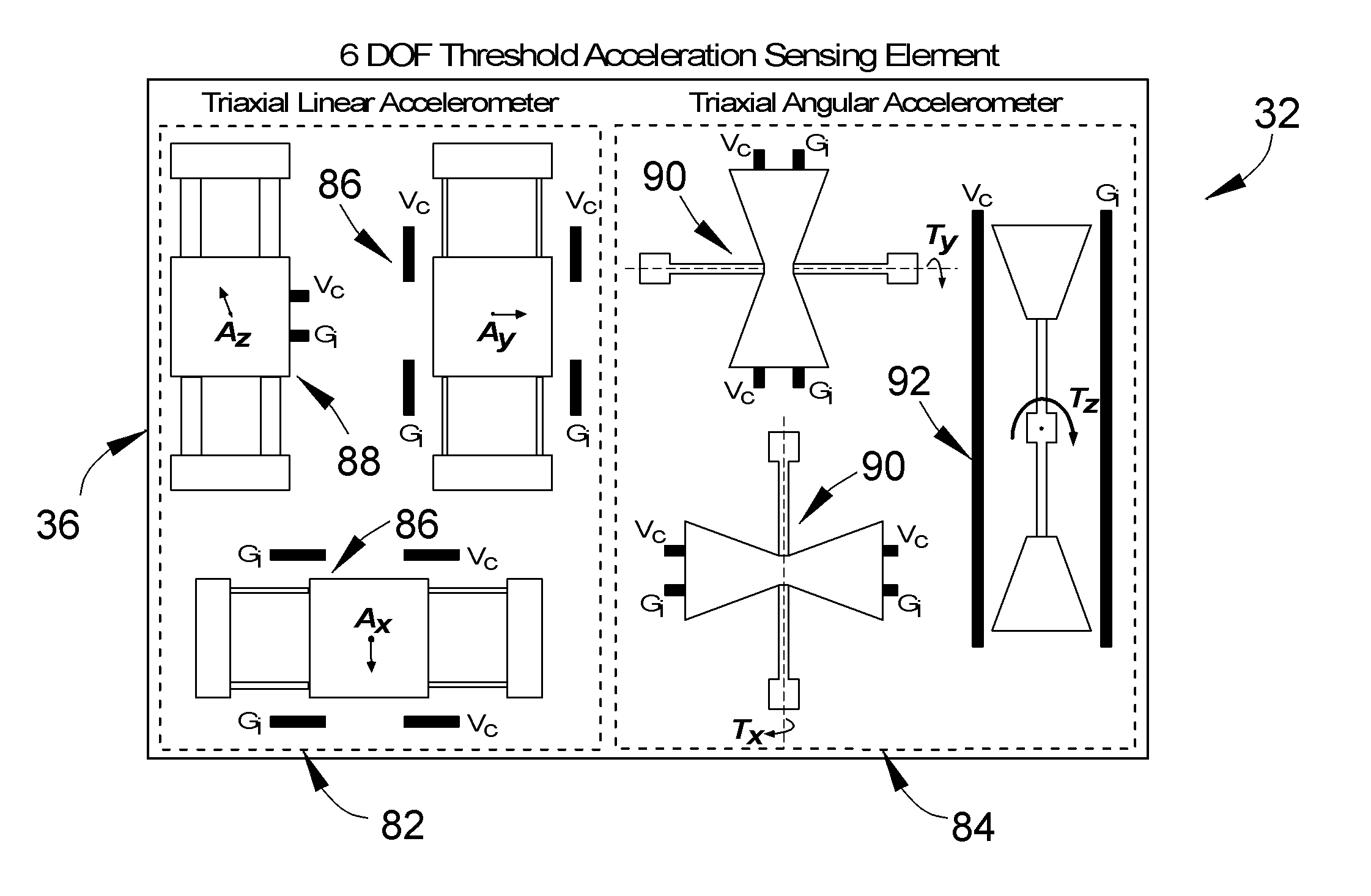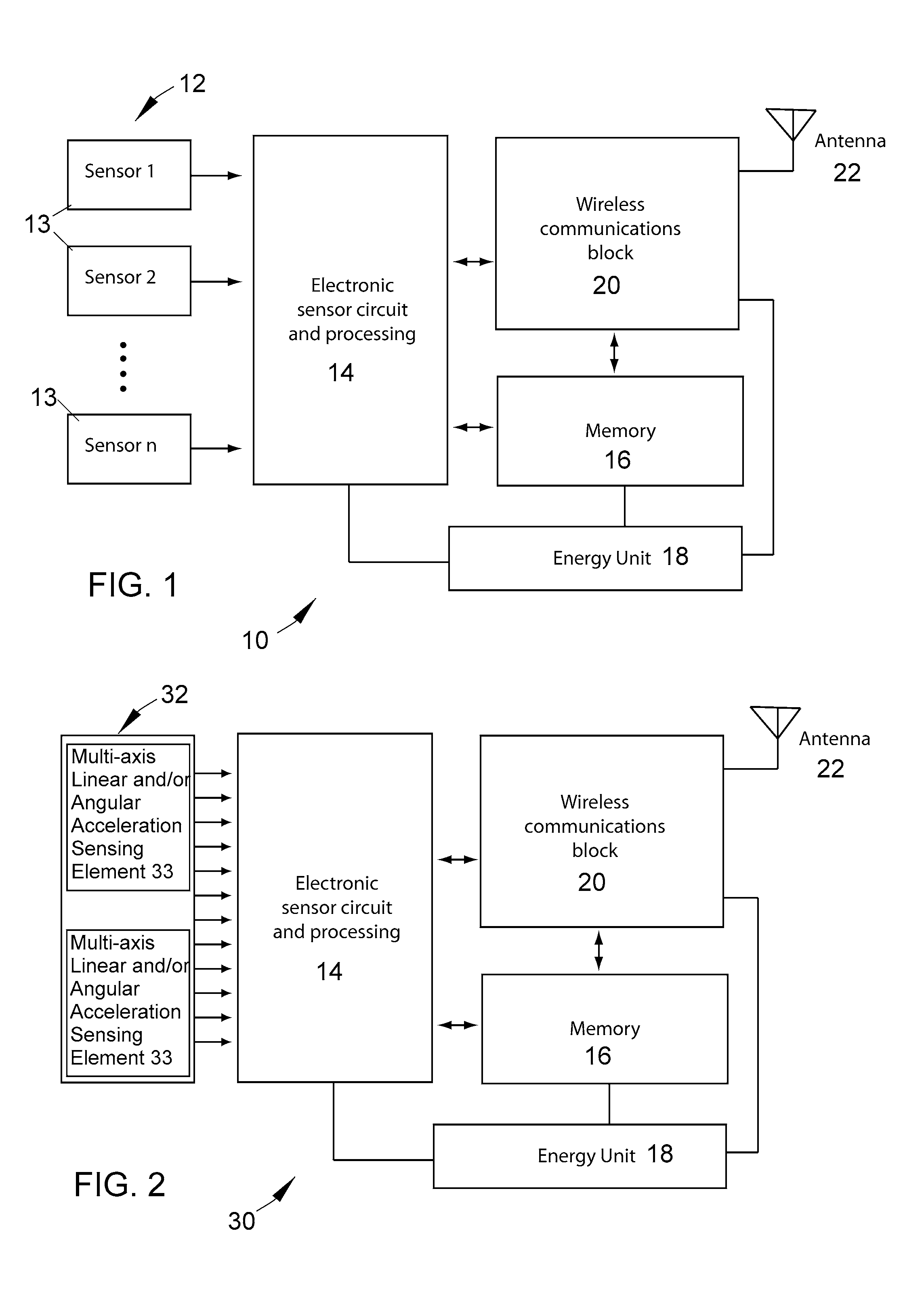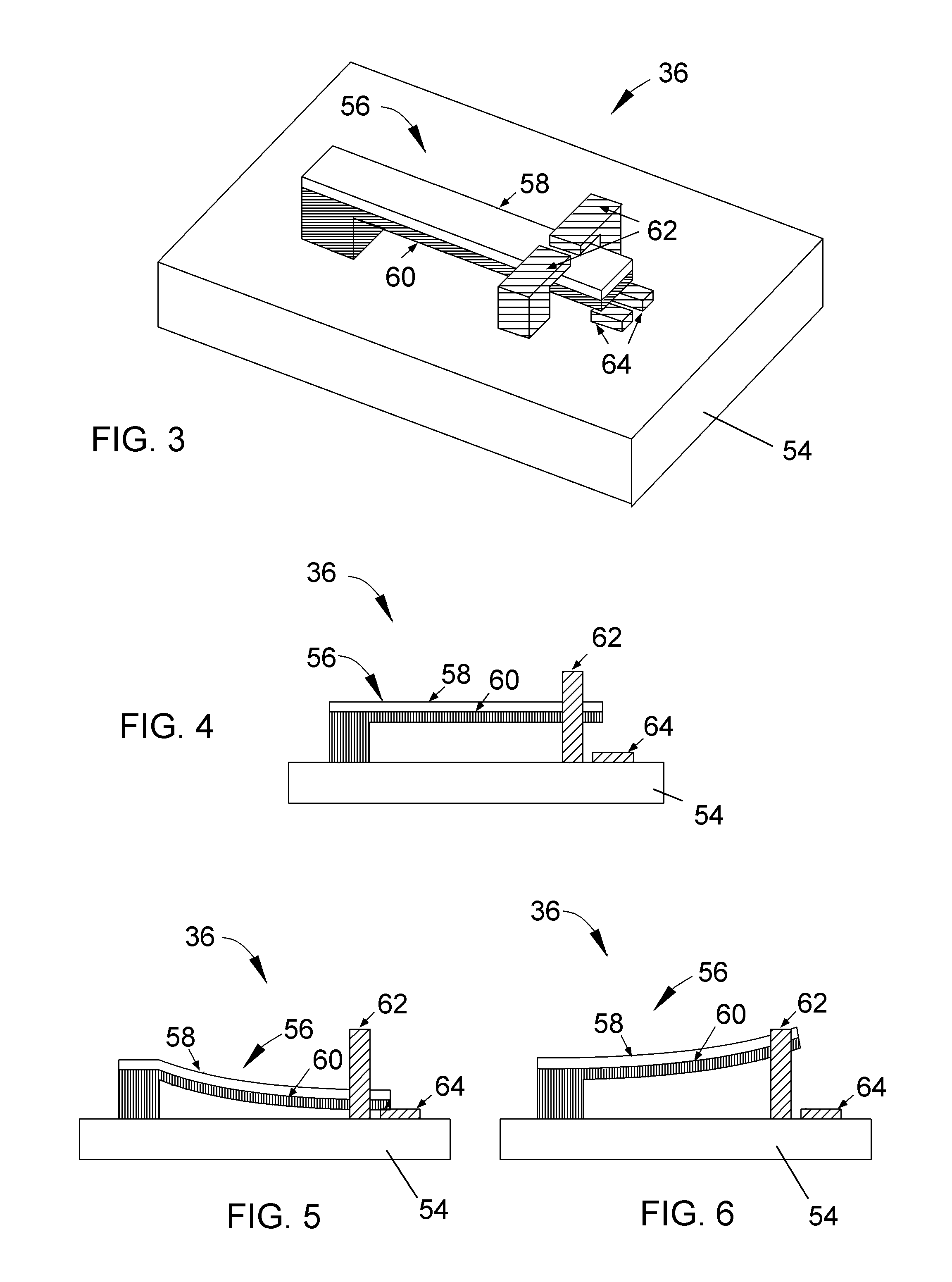Implantable sensing modules and methods of using
a sensing module and sensor technology, applied in the field of electromechanical devices, can solve the problems of insufficient environmental energy sources to power the sensor, impracticality, and need for batteryless operation, and achieve the effects of reducing the size of the sensor, prolonging the operation, and reducing the cost of operation
- Summary
- Abstract
- Description
- Claims
- Application Information
AI Technical Summary
Benefits of technology
Problems solved by technology
Method used
Image
Examples
Embodiment Construction
[0026]The present invention provides miniature implantable sensing modules whose small size enables the modules to be placed into a living body, preferably to a bone, tooth or other rigid surface where it can monitor and generate data relating to an external input, such as physiological parameters of the body and / or environmental parameters to which the body may be subjected. The modules make use of an energy storage device and one or more electromechanical sensing elements. The modules also preferably make use of non-volatile memory to store the data and a wireless communication system that enables the data to be retrieved from the modules by an external reader. The components of the modules are preferably selected so that the modules require very little power for their operation, enabling the modules to remain implanted and operable for long periods of time, potentially on the order of years, without need for replacement.
[0027]As will be evident from the following description, a p...
PUM
 Login to View More
Login to View More Abstract
Description
Claims
Application Information
 Login to View More
Login to View More - R&D
- Intellectual Property
- Life Sciences
- Materials
- Tech Scout
- Unparalleled Data Quality
- Higher Quality Content
- 60% Fewer Hallucinations
Browse by: Latest US Patents, China's latest patents, Technical Efficacy Thesaurus, Application Domain, Technology Topic, Popular Technical Reports.
© 2025 PatSnap. All rights reserved.Legal|Privacy policy|Modern Slavery Act Transparency Statement|Sitemap|About US| Contact US: help@patsnap.com



